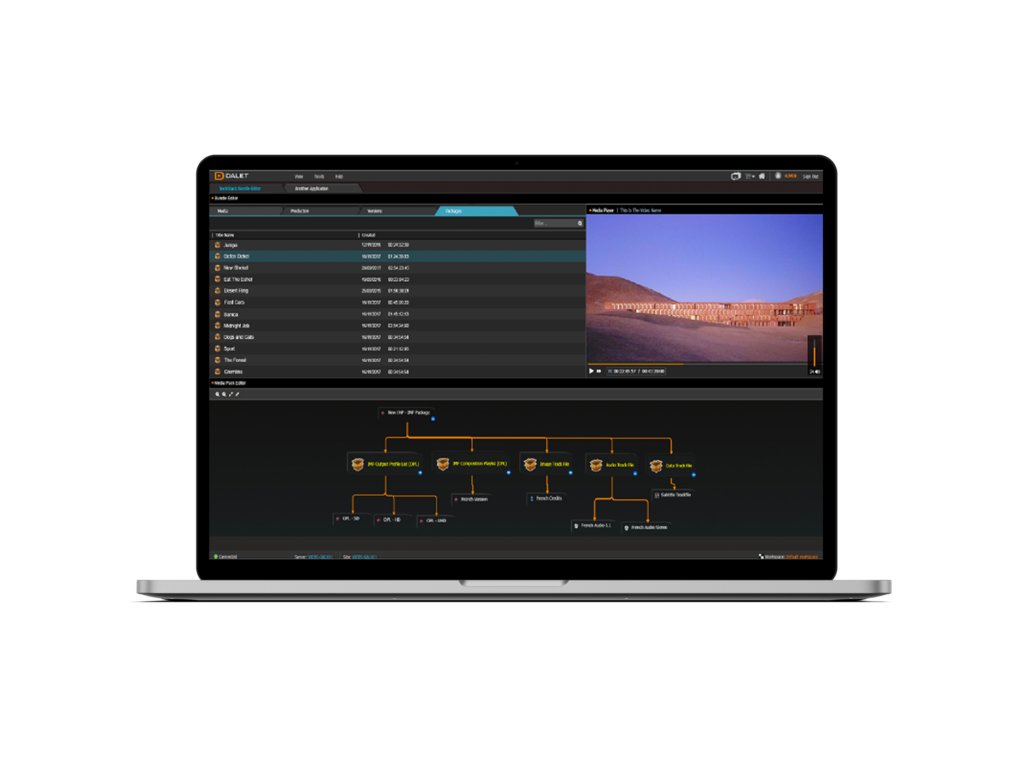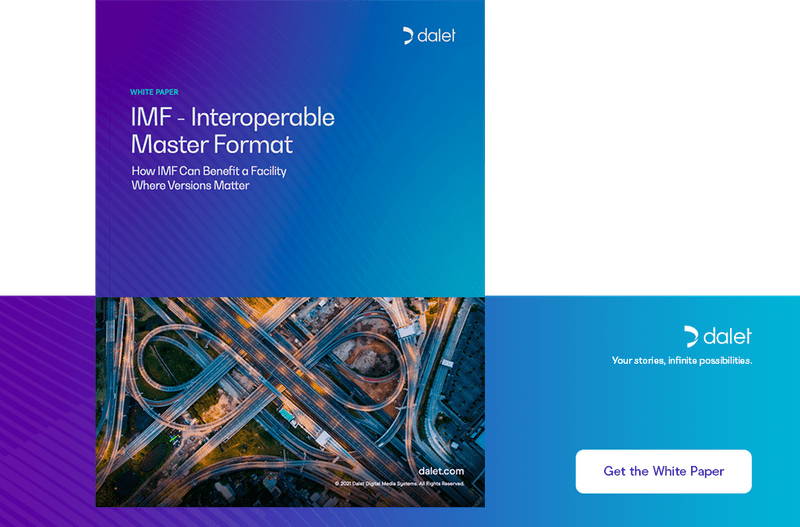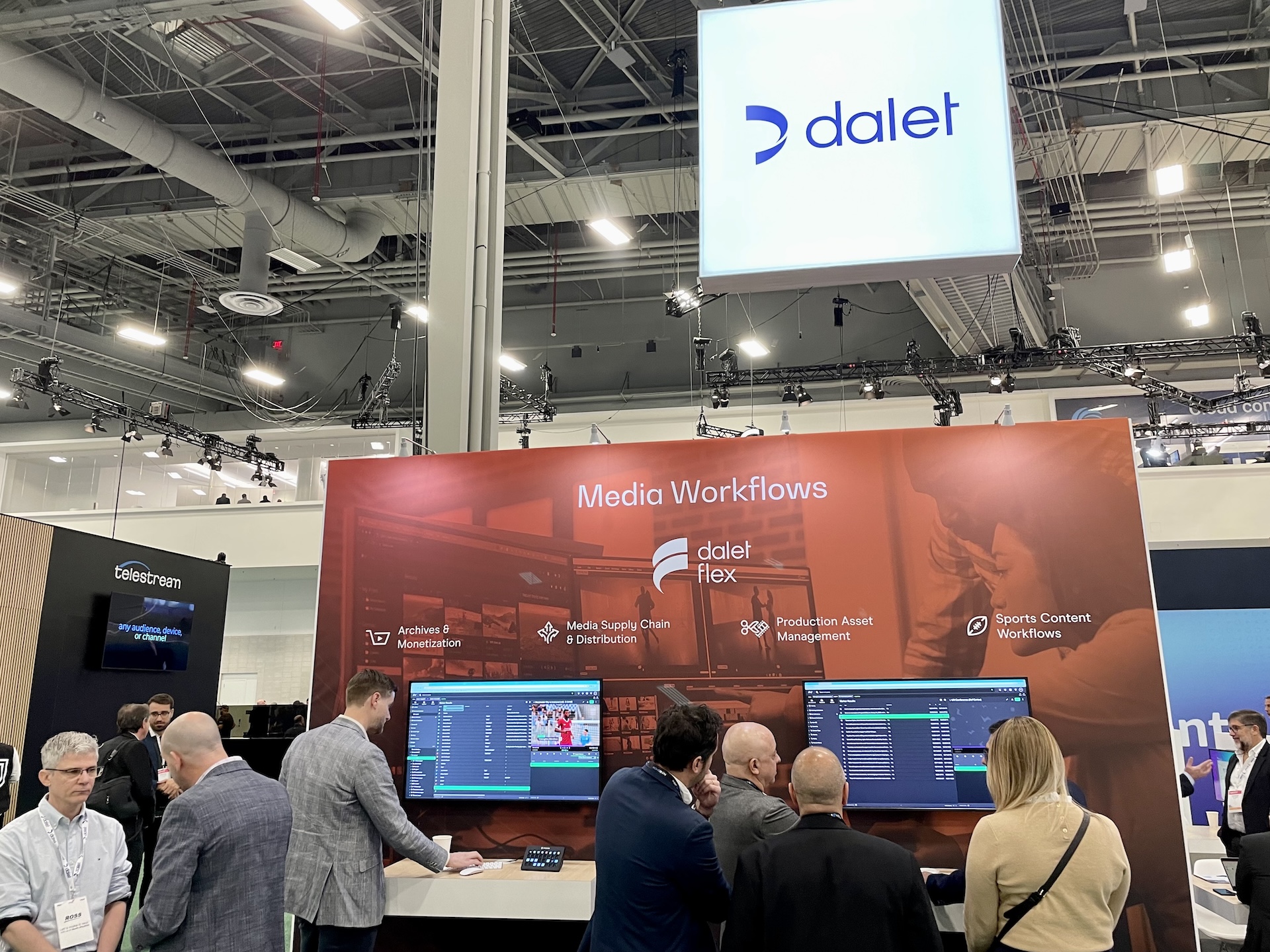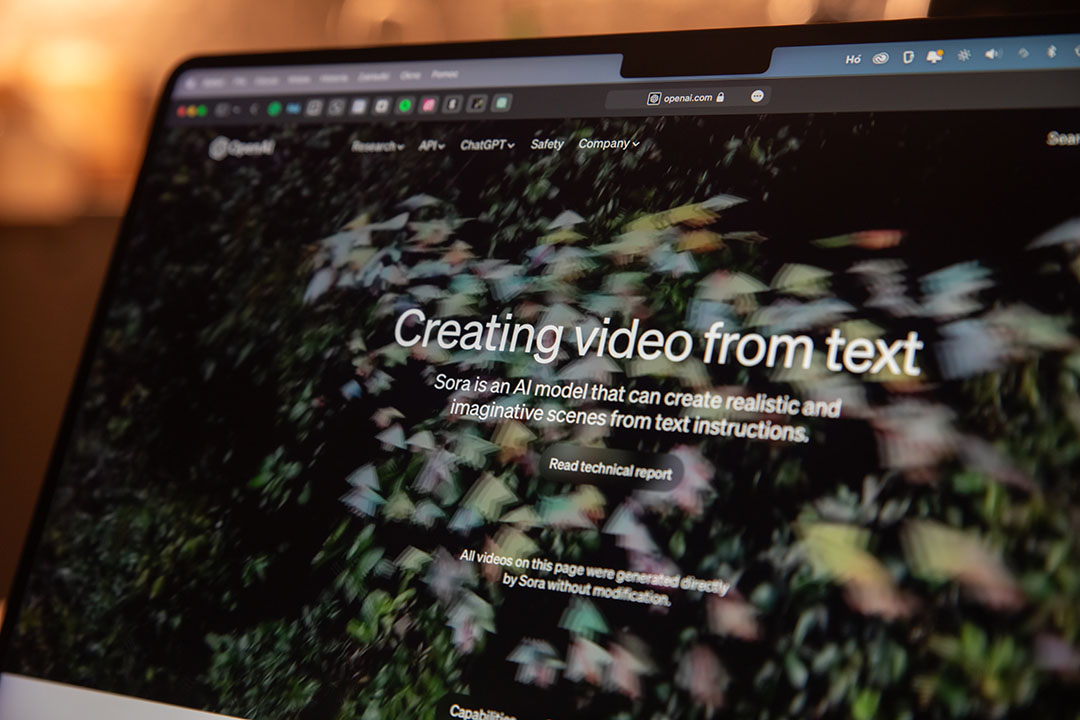If you read my previous post on IMF, you’ll already know that unlike its finance focussed namesake, the Interoperable Master Format (IMF) is in fact designed to improve our lives: it is a new SMPTE file format designed to create a single – standardized – master bundle for distribution of versioned content between businesses into multiple territories:
The content creation workflow is currently very unwieldy with multiple incompatible processes, all using different technology. IMF’s goal is to streamline this and have a common set of processing and rules that take us from the director’s vision for the film, to the manufacture and distribution of cinema variants, film variants, and versions for other distribution channels such as television and the internet. In simple terms: creative operations in the hands of capable people; dull and repetitive tasks automated using IMF processes.

Various Components
IMF provides the specification to separate the content into various ingredients or components (namely, MXF media files), a number of ‘recipes’ (Composition Play Lists, or CPLs) and a selection of instructions (or Output Program Lists, or OPLs) appropriate for each of those audiences.
The ingredients – different versions of scenes, clips to be used in trailers and promotions, language tracks and so on – will exist as separate AS02 media files inside an IMF bundle. So content needs to be captured, ingested and transcoded where necessary.
The CPL – the recipe – will be created for each version as an editing process, although some of this is likely to be automated.
The OPL – the delivery instructions – will be standardized: there will be rules on what formats are required for each territory and customer.
AS02 will in effect become the carrier for the raw data essence, while the CPL and OPL will represent the individual recipes and instructions for each territory and version. IMF encompasses not just file storage, but also the CPL and OPL details for each version as well as a packing list to ensure that the right components end up in the right version of the content.
Automated Conversion of IMF
Once IMF is rolled out in to the content creation workflow, we will begin to see IMF appearing in the drop boxes of tier 1 broadcasters. At that point the need to automate the conversion of IMF to other formats such as the Digital Production Partnership (DPP) will become important: this is essentially what the OPL does. Both IMF and DPP have strict rules for file and metadata creation, and both are solving business problems with stringent requirements. As a result, automating the exchange between the two should be straightforward, with less need for human interaction within that process. The DPP format has been recognized as an international standard (MXF AS11) and, while some broadcasters around the world may adopt it, others may define their own preferred file delivery format. Under IMF, another format would just be another OPL, another set of delivery rules.
IMF sits at the top of the food chain of these interoperable applications, which solves the very specific issue of how to manage the data essence that resides within a large number of versions. IMF will feed the food chains of DPP and other content exchange applications. Because both IMF and DPP are so well defined, this facilitates a high level of automation and efficiency, and lower costs, as well as a significant increase in media re-use.
What is unclear at this stage is whether content from a broadcaster such as the BBC or Channel 4 will ever actually see an IMF file that will have to be converted to DPP, or if this process will be done by third parties such as post production specialists like deluxe, by the content creators (Disney, for example) or in the cloud as an on-demand service. However, what is certain is that it can all be done automatically by the Dalet AmberFin media processing & mastering platform, regardless of who owns the software. If you want to find out more about IMF, watch our IMF webinar replay and check out our dedicated white paper:

Featured in: Dalet AmberFin | IMF | Media Workflows | MXF | SMPTE | Transcoding |
Lee is a seasoned video production and distribution specialist and former product strategist for Dalet media workflows. With more than ten years experience, he ensures the successful launch of industry-leading products in addition to complex video workflow deployments with some of the largest media companies and brand enterprises worldwide.
More Articles By Lee


